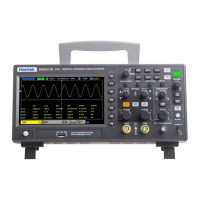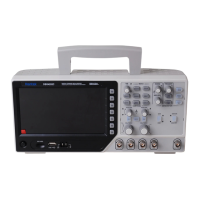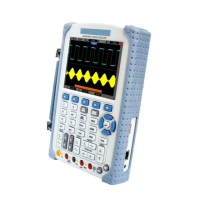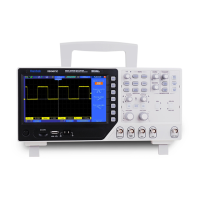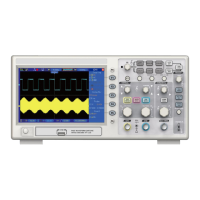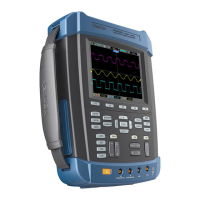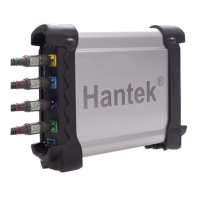51 / 72
When you acquire an analog signal, the oscilloscope will convert it into a digital one. The real-time
acquisition has four modes: Normal, Peak Detect, Average and High Resolution. The acquisition rate is
affected by the setting of time base.
Normal: In this acquisition mode, the oscilloscope samples the signal in evenly spaced intervals to
establish the waveform. This mode accurately represents signals in most time. However, it does not
acquire rapid variations in the analog signal that may occur between two samples, which can result in
aliasing and may cause narrow pulses to be missed. In such cases, you should use the Peak Detect
mode to acquire data.
Peak Detect: In this acquisition mode, the oscilloscope gets the maximum and minimum values of the
input signal over each sample interval and uses these values to display the waveform. In this way, the
oscilloscope can acquire and display those narrow pulses that may have otherwise been missed in
Normal mode. However, noise will appear to be higher in this mode.
Average: In this acquisition mode, the oscilloscope acquires several waveform, averages them, and
displays the resulting waveform. You can use this mode to reduce random noise.
High Resolution (HR): This mode uses a kind of ultra-sample technique to average the neighboring
points of the sample waveform to reduce the random noise on the input signal and generate much
smoother waveform on the screen. This is generally used when the sample rate of the digital converter
is higher than the storage rate of the acquisition memory.
Note: "Average" and "HR" modes use different averaging methods. The former uses "Multi-sample
Average" and the latter uses "Single Sample Average".
Time Base: The oscilloscope digitizes waveform by acquiring the value of an input signal at discrete
points. The time base helps to control how often the values are digitized. Use the SEC/DIV knob to
adjust the time base to a horizontal scale that suits your purpose.
Push the UTILITY button and press Acquire softkey to set the acquisition parameter.
YT format shows the vertical voltage in relation to time (horizontal
scale); XY format displays a dot between CH1 and CH2 each time when a
sample is acquired, where the voltage or current of CH1 determines the
X coordinate of the dot (horizontal) and the voltage or current of CH2
determines the Y coordinate (vertical). For detailed information, refer to
descriptions on XY format in the following text.

